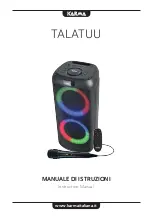
Doc. 20780_03
21
ADPRO Passive-Infrared (PIR) PRO Series by Xtralis
Planning and Commissioning Manual
NOTE!
Because of the lack of range termination, it is important that a
management system includes a link between the detectors and the
right camera orientation mapping, so that the situation can be
assessed quickly and efficiently.
*) For certain applications, it may be a case of dealing not with
intruders, but with those who wish to break out from inside.
In this case detectors with directional detection (D-versions) can be
used to avoid false alarms. This applies, for instance, to prisons,
animal cages/ enclosures and parks.
5.5
False Alarms (according to DIN European Standard
0833-1)
False alarms can be classified as follows:
Technical alarm (Blind alarm):
The detector is defective, or has, for instance, been distorted by an electromagnetic
field.
Malicious alarm:
An alarm is triggered deliberately without actual need, for instance, false tripping of a
PIR detector by twisting.
False alarm:
A detector or alarm is ‘deceived’ by something that is similar to a real danger, such as
alarms caused by large animals, vehicle exhaust fumes or environmental factors.
Transmission errors:
It sometimes happens that transmission or communication errors cause false alarms
(a lack of competence with regard to the particular place, or false assumptions).
5.5.1
Causes of False Alarms
5.5.1.1 Insufficiently Stable Poles or Masts (Swinging)
When mounting ADPRO PRO detectors, always ensure that there is a solid surface, in the
form of a stable and vibration-free wall. If the mounting is on a mast, it must be secure so
that even in unfavourable weather (particularly wind), there is very little or no rocking at the
upper end of the mast.















































